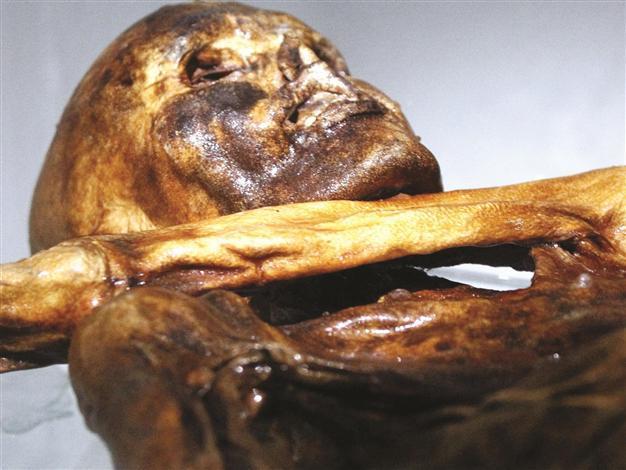DNA results help to flesh out iceman‘Otzi’
MILAN - Reuters

The mummy of the iceman Otzi was discovered in 1991 in the Schnal Valley glacier.
The first complete genome-sequencing of “Otzi,” Italy’s prehistoric iceman, is revealing a wealth of details about the man who roamed the Alps 5,300 years ago and could unleash a frenzy of activity among scientists thanks to open data.
Over the last 20 years, scientists have painstakingly collected data from the stomach, bowels and teeth of the 45-year old man, who was found sticking out of a glacier by German climbers in 1991 in the Tyrolean Alps on the Austro-Italian border.
But for the first time since the Copper-age individual was unearthed, his complete genetic profile has been reconstituted, revealing a very modern predisposition for cardiovascular diseases, lactose intolerance, and brown eyes that betray near-Eastern origins.
“He is more closely related to modern Sardinian or Corsican populations than, for instance, mainland Italy further to the south,” Angela Graefen, a human genetics researcher at the Eurac Institute for the Mummies and the Iceman in Bolzano, Italy, said on March 1.
Otzi, a hunter who was felled by an arrow while climbing the high mountains, was also predisposed to arteriosclerosis and heart diseases, conditions thought to be more linked to modern risk factors such as being overweight, smoking or drinking.
The research helps flesh out a picture of the iceman, who had brown hair, type-O blood, the lactose intolerance that was common among Neolithic agrarian societies. He also was the first-known carrier of Lyme disease, a bacterial infection spread by ticks.
But the full-genome sequencing also opens far more possibilities for researchers around the globe than the 2008 sequencing of his mitochondrial DNA.
